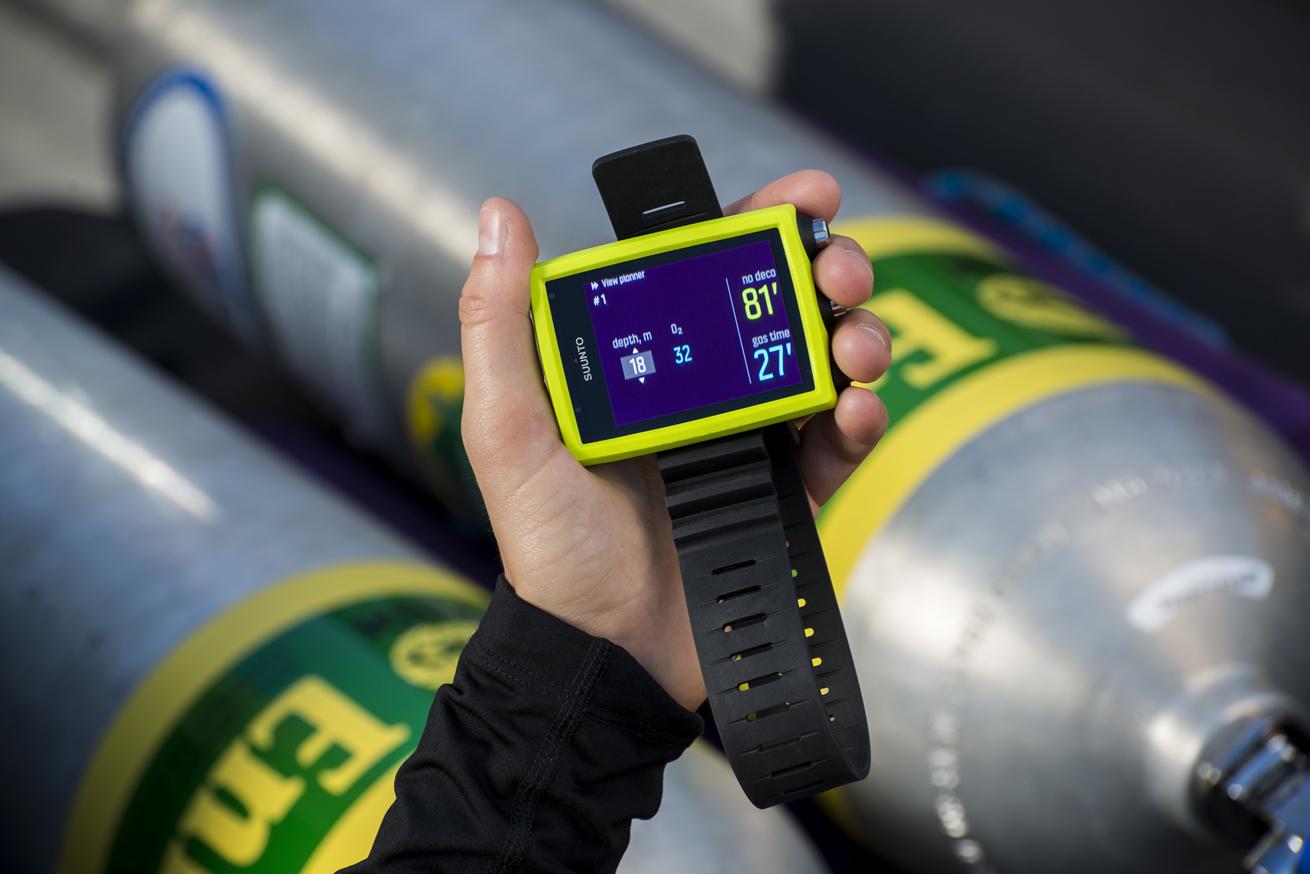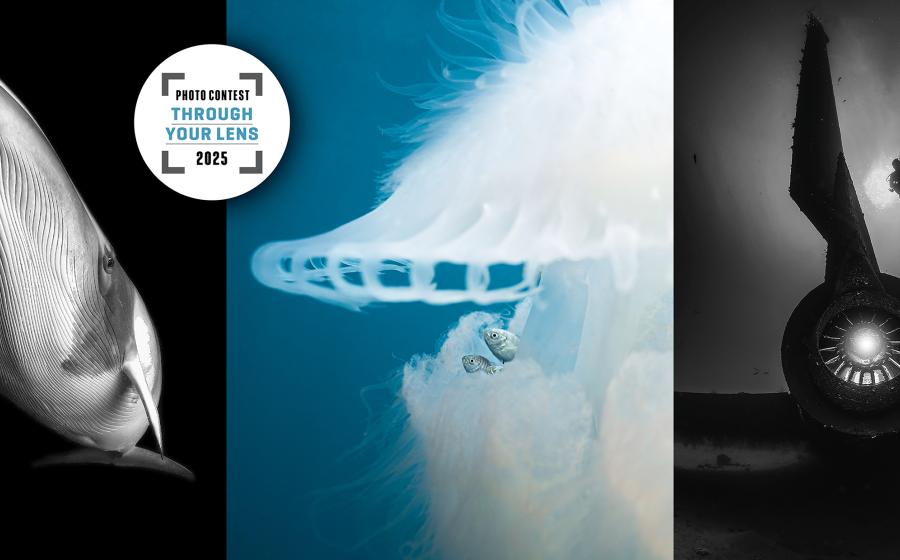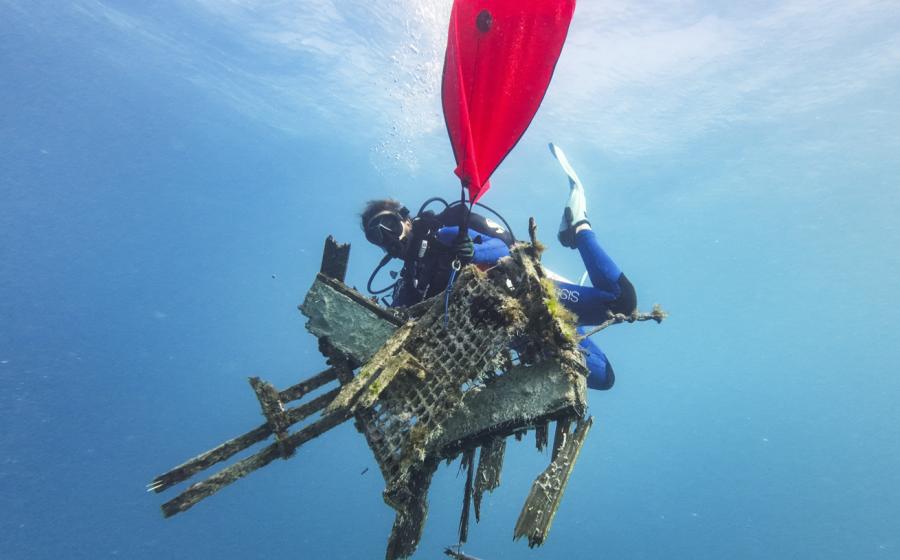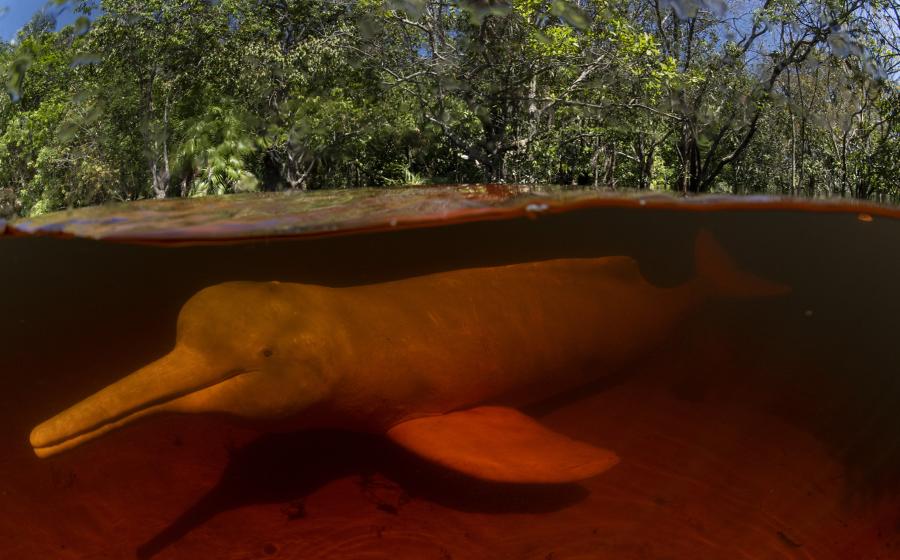Scuba Gas 101

Scuba diving equipment has evolved since Jacques Cousteau and Émile Gagnan first introduced the Aqua-Lung. The gases we fill our cylinders with has also changed over time—from air to nitrox, trimix and other experimental mixtures. However, one thing has remained the same: the importance of knowing exactly what gases you are breathing!
Why Does Gas Mix Matter?
You likely recall that the air we breathe on land is composed of roughly 21 percent oxygen and 78 percent nitrogen, with additional trace gases. The sum of partial pressures at sea level equals 1 atmosphere. At the filling station, we can modify the percentage of each gas, and in the water, we can change the partial pressure of these gases by changing our depth. Scuba diving essentially requires us to turn the act of breathing off autopilot and switch to manual mode. Understanding how the gas we breathe affects our dive ensures that we can enjoy diving while mitigating risk.
Related Reading: How to Book a Safe Liveaboard Trip
Oxygen is necessary for life, but prolonged exposure to high partial pressures of oxygen can lead to oxygen toxicity, seizures underwater and, potentially, a diving fatality. Breathing a gas blend that contains hypoxic levels of oxygen can also rapidly cause a loss of consciousness. If you have not learned how to use gases other than air, consider taking a course on how to use nitrox!
Nitrogen is famous for its narcotic effects at depth, which can impair decision making and slow reaction times. While some of the narcotic effects and gas density issues can be offset with helium, that conversation is better reserved for a full course with an instructor.
Potential Contaminants
Breathing-gas contamination is fortunately rare but can lead to serious complications when it occurs. The contamination typically occurs due to impurities in the environment where the cylinders were filled or due to byproducts of the compression process. Potential culprits include carbon monoxide (CO), volatile hydrocarbons, oil or dust. These contaminants cause symptoms such as headache, dizziness, weakness, confusion and loss of consciousness. Getting fills from a reputable shop with well-maintained equipment is the best way to avoid contaminated gas. However, there are some additional measures you can take to avoid contaminants.
Carbon monoxide is an invisible, odorless and tasteless gas that can be detected using an electric CO detector, which may be available at the fill station. Other contaminants typically cause unusual tastes or odors that can be detected during your predive breath check. If you think you may have been exposed to a contaminant, ask if other divers breathing gas from the same source experience similar symptoms. If you believe you are involved in an incident, preserve the tank and contact DAN Research at 919-684-2948 for gas analysis assistance.
Understanding how the gas we breathe affects our dive ensures that we can enjoy diving while mitigating risk.
Labeling and Analysis
A large part of gas safety is proper analysis and labeling. Multiple tragedies have occurred because a diver did not personally check the contents of a cylinder that was given to them or was mislabeled. It is a good idea to personally analyze any gas you plan to use, and I would highly encourage you to reanalyze cylinders on the day of your dive.
Gas analyzers use electrochemical sensors that degrade and will become inaccurate with time. I write the date I need to replace the sensor on a piece of duct tape and stick it right on my analyzer. Using expired sensors may mislead you, so add this simple check to your maintenance checklist.
Related Reading: How to Book a Safe Liveaboard Trip
There are also some habits we can build to reduce potential errors. These include analyzing and labeling all cylinders regardless of whether you believe you know what is inside, removing old analysis stickers from tanks before filling, and writing your initial, date of analysis and gas mix down to the 10th place (which helps distinguish between requested oxygen percent at the fill station and analyzed percentage).










